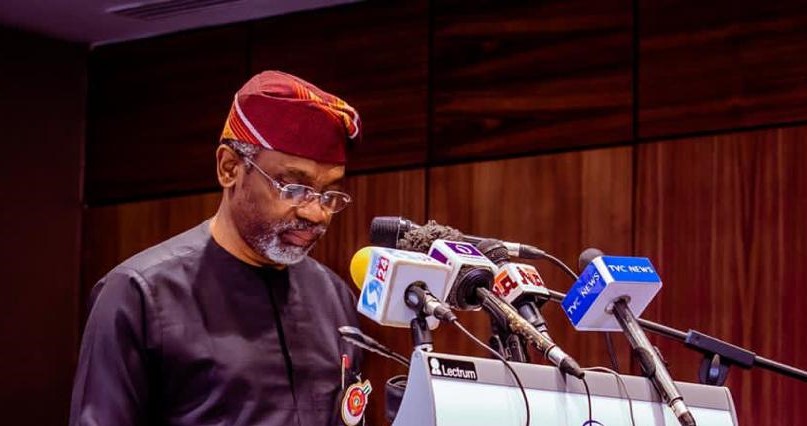NIBSS: Deepening financial inclusion in Nigeria ‘sharp sharp’
When the issue is money, Nigerians are quite impatient. Forget the talk of our being the happiest people on earth, which, ordinarily, should have made us a bit more open and trusting of others. If in doubt, consider this: banking halls are largely filled by angry and fearful customers most Monday mornings, why? These are people who generally believe they had been dealt a bad hand by technology and a system they intensely distrust. Often, the problem is one of ‘dispense error’ by ATM’s, point-of-sale (POS) terminals, or failed transfers during transactions over the weekend. Few of these customers are in any good mood to listen to rational explanations by customer service staff that the errors are usually self-correcting or that the money is not lost. From any distance, you could almost hear their heavy sigh of relief when the errors are eventually ‘reversed’.
Owing to these problems, the financial services community in Nigeria has perpetually been kept on its toes by customers who are most unwilling to avail the system any benefit of the doubt. On the upside, however, operators have never quite rested on their laurels as they continually seek to re-invent and innovate. This has in turn occasioned the need for global benchmarks to deepen the system, ensure stability in the financial ecosystem and engender financial inclusion, especially amongst those who would otherwise have been left out.
Perhaps, the best evidence yet of a revolution in service delivery in the financial system was the birth of the Nigeria Interbank Settlement System (NIBSS) in 1993. In 38 years, NIBSS has positively impacted the financial services sector to the extent that customers appear to have easily forgotten how far they have travelled to get good delivery of services. Take, for example, the settlement of payments for transactions between individuals or merchants. Hitherto, the clearing of upcountry cheques took a minimum of 21 days. By 2002, the clearing cycle had significantly reduced to T+5, that is, transaction day plus five days for upcountry transactions and T+3 for local transactions. By 2013, the clearing cycle had further reduced to T+1 nationwide. In the present time, customers even enjoy instant bank transfers.
On Monday, 15 March 2021, NIBSS upped the ante with the launch of the ‘Quick Response (QR) Payment Solution,’ which is a robust platform that delivers instant cash value for person-to-business or person-to-person transactions. This is done by simply scanning the machine-readable code to effect instant payment and receipt between customers and merchants. With the launch of the solution, NIBSS demonstrated, in the words of its Chief Executive, Mr Premier Oiwoh, that the financial services industry follows innovation, not tradition. This, to me, is good news for customers granting the ease of use any time commercial transactions on a globally accepted platform.
Advertisement
Though faster than existing payment systems, NQR was designed essentially as a complementary, not exclusionary payment platform. This is a good development, as it offers customers an additional digital payment option to consummate financial transactions. For this latter reason, NIBSS has assured users that NQR will “unify available closed QR code schemes in the country for consistent user experience and acceleration of digital adoption.”
For me, the beauty of the introduction of the NQR is that it has the potential to override customer suspicion of the financial services industry. In a nation where everyone wants things to happen ‘sharp, sharp’ because everyone is perpetually in a hurry, the solution makes it much easier to affirm the confidence-building notion of ‘seeing is believing.’ This is because the solution, as it were, is in everyone’s hands. All that is required is for a merchant to register with their bank of choice and to display the QR code generated to receive payments in their outlet. The Payer/customer, on the other hand, only needs to select the NQR option on their bank’s mobile application and scan the displayed NQR Codes to make payment to the merchant. Merchants and payers get instant notification of payment made. Problem solved.
In this age of social distancing brought on by the COVID-19 pandemic, one cannot but appreciate the thinking that went into the conception of the NQR, which helps to ensure minimal contact between the customers and merchants because it is cashless, card-less, and seamless. The process is made possible by the fact that QR codes, by design, capture a high quantum of information that could easily be accessed via various mobile devices. Since the process is transparent and acknowledged to be free of known security flaws, the basis of suspicion in financial transactions is virtually removed so, as it were, everyone can sleep easy.
Advertisement
However, for all the acknowledged benefits of the NQR, the project owners still have work to do. First is the need to create wide awareness of the solution, the more so as Nigerians are not known to be early adopters of global trends, except perhaps in fashion and entertainment. It also stands to reason that cost per transaction will be a key factor in the quick adoption of the NQR payment solution, especially if customers find the solution to be cheaper than what obtains on existing transaction platforms. All said, NIBSS needs to be commended for its never-ending quest at developing solutions that engender peace of mind for customers.
Dotun Adekambi, a marketing consultant and author, writes from Lagos.







